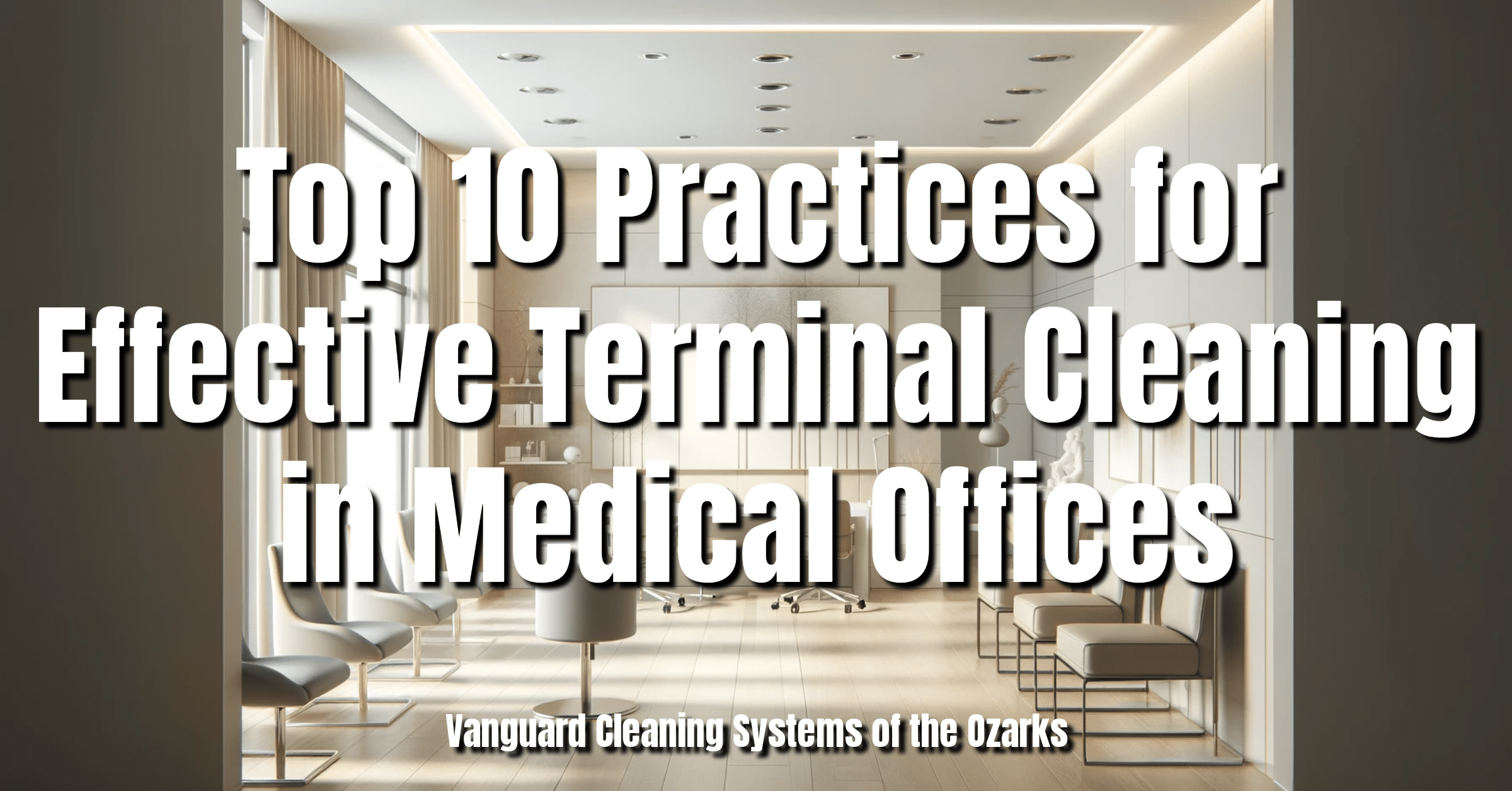Discover the key to a healthier, safer medical environment through effective terminal cleaning.

Top 10 Essential Practices for Effective Terminal Cleaning in Medical Offices
Ensuring a sterile environment in medical offices is not just about cleanliness; it's a critical aspect of patient care and safety.
Terminal cleaning, a comprehensive cleaning method used in healthcare settings, plays a pivotal role in preventing the spread of infections.
This method involves thoroughly disinfecting all surfaces and equipment in a room, especially after being used by patients with infectious diseases.
Let's explore the top ten practices that are essential for effective terminal cleaning in medical offices.
- Understanding Terminal Cleaning Terminal cleaning goes beyond routine cleaning. It is an intensive disinfecting process for patient rooms or areas after being vacated, targeting microorganisms that contribute to healthcare-associated infections (HAIs). This process reduces the risk of pathogen transmission to future patients.
- Selecting the Right Cleaning Agents Using EPA-approved disinfectants is crucial. These agents must be effective against a broad spectrum of pathogens, including bacteria, viruses, and fungi. The selection of cleaning agents should align with the types of surfaces and equipment in the medical office.
- High-Touch Surface Focus High-touch surfaces like doorknobs, bedrails, light switches, and medical equipment need special attention. These areas should be cleaned more frequently due to their higher risk of harboring pathogens.
- Preventing Cross-Contamination Implementing color-coded cleaning supplies can help prevent cross-contamination. For example, using different colored cloths for various areas (like patient rooms, bathrooms, and general areas) minimizes the risk of spreading germs.
- Personal Protective Equipment (PPE) Cleaning staff must wear appropriate PPE, such as gloves, gowns, and masks, to protect themselves and prevent the spread of pathogens.
- Cleaning Protocols for Medical Equipment All medical equipment should be cleaned and disinfected according to manufacturer guidelines. This ensures the safety and longevity of the equipment.
- Waste Disposal Management Proper disposal of medical waste, including sharps, is essential. This prevents environmental contamination and reduces the risk of injury to staff and patients.
- Training and Compliance Staff should be regularly trained in updated cleaning protocols and compliance with healthcare regulations to maintain a consistently high standard of cleanliness.
- Record Keeping and Scheduling Maintaining detailed records of cleaning schedules, procedures, and compliance checks ensures accountability and helps identify areas for improvement.
- Patient Awareness and Communication Informing patients about the cleaning practices in place can increase their confidence in the safety of the medical office.
Takeaway
Effective terminal cleaning in medical offices is not just about maintaining a clean environment; it's about safeguarding the health and well-being of patients and staff.
By adhering to these top ten practices, medical offices can significantly reduce the risk of HAIs and promote a culture of safety and cleanliness.
Remember, a clean medical office is a safer one – start enhancing your cleaning practices today.
Vanguard Cleaning Systems® of the Ozarks' franchise-owned custodial service provider business cleans more than 8M sq. ft. weekly, maintaining an industry topping 95+% of its customer base, year-over-year, and boasting more than 60 5-star Google reviews.
Need more capability from your vendor partners? --Let's talk.
In Oklahoma, dial 918-960-4450
In Arkansas, dial 479-717-2410
In Missouri, dial 417-812-9777

